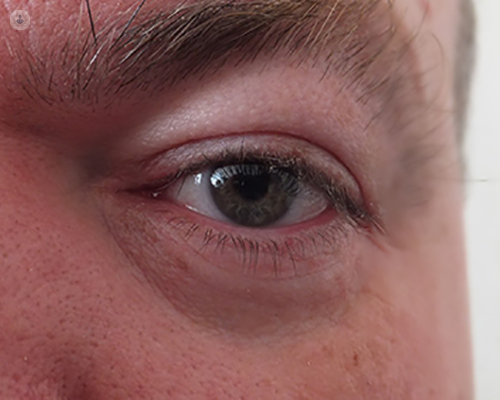Blepharoplasty: An expert insight
Written in association with:Blepharoplasty, often referred to as eyelid surgery, is a cosmetic procedure aimed at rejuvenating the appearance of the eyelids. It addresses concerns such as excess skin, fat deposits, and drooping that can occur with age or due to genetic factors. In his latest online article, Mr Jonathan Dunne aims to provide you with a comprehensive overview of what blepharoplasty entails, its benefits, considerations, and what you can expect during the procedure.

What is blepharoplasty?
Blepharoplasty is a surgical procedure aimed at enhancing the aesthetic appearance of the eyelids, addressing concerns in either the upper eyelids, lower eyelids, or both. The main goals of the surgery include removing excess skin, repositioning or removing fat deposits, and tightening muscles and tissues around the eyes to create a more youthful and refreshed look.
Who is a candidate for blepharoplasty?
Candidates for blepharoplasty typically include individuals who have:
- Excess skin that hangs down from the upper eyelids, potentially impairing vision.
- Puffiness or under-eye bags that give the eyes a tired or aged appearance.
- Drooping lower eyelids that expose the white of the eye below the iris.
It is essential for candidates to be in good overall health and have realistic expectations about the outcomes of the surgery. A consultation with a qualified plastic surgeon is crucial to determine if blepharoplasty is suitable for your specific concerns.
The procedure: What happens during blepharoplasty?
Before the surgery, you will undergo a thorough examination and discussion with your surgeon about your goals and medical history. Blepharoplasty is usually performed under local anaesthesia with sedation or general anaesthesia, depending on the extent of the procedure and your comfort.
For upper eyelid surgery, incisions are typically made along the natural creases of the eyelids, allowing for discreet scars that blend in with the natural contours of your eyes. Excess skin and fat are then carefully removed or repositioned before closing the incisions with fine sutures.
Lower eyelid surgery may involve an incision just below the lower lash line or inside the lower eyelid (transconjunctival approach), where excess fat can be removed or redistributed to diminish puffiness and improve contours.
Recovery and results
Following blepharoplasty, it is normal to experience some swelling, bruising, and mild discomfort, which can be managed with prescribed medications and cold compresses. You may need to avoid strenuous activities and heavy lifting during the initial recovery period.
Results of blepharoplasty are typically long-lasting, contributing to a more alert, youthful appearance. It's important to follow your surgeon's post-operative instructions diligently to ensure optimal healing and minimise complications.
Mr Jonathan Dunne is an esteemed plastic and reconstructive surgeon. You can schedule an appointment with Mr Dunne on his Top Doctors profile.


